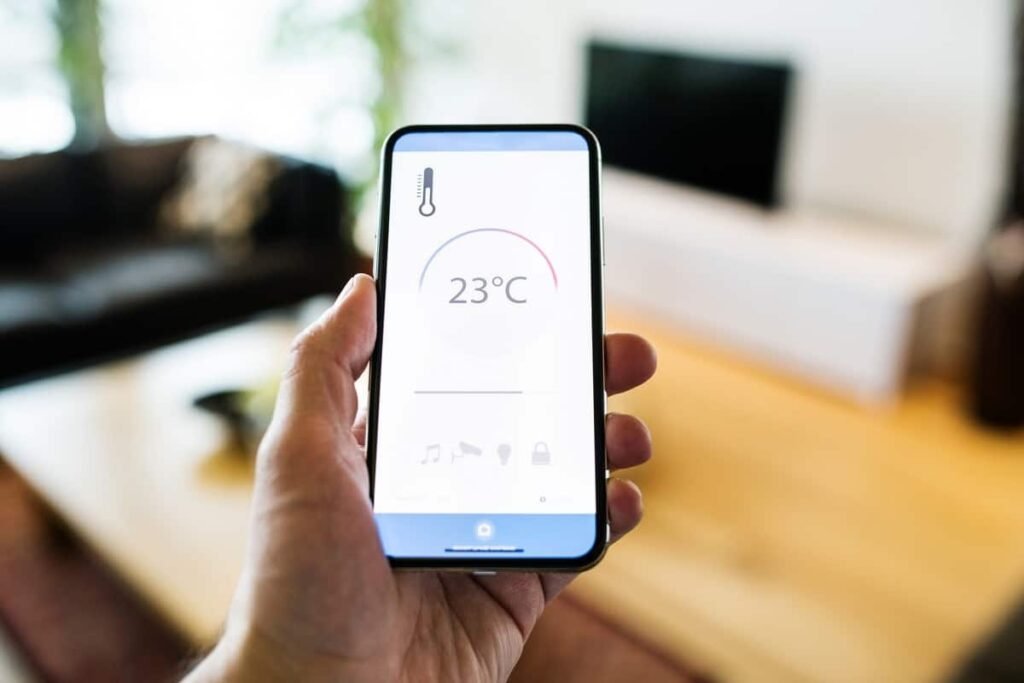The peak heating load for most buildings is when the sun is not shining.
When heating is most required (winter) the amount of available solar energy is at its minimum, due to both the reduced level of insolation and overcast/cloudy weather.
Next, let’s break down the technology: A single array of 30 evacuated tubes with an absorber area of 2.4m² has an average efficiency of 65.6% (Apricus). On an average winters day we could reasonably expect around 2.7kWh.m² of total gain in Perth (BOM Climate Data). This leaves us with 4.25kWh to work with, not considering any other energy losses through pipes or storage tanks (even when insulated).
For a building with 250m² of heated area, we require around 20kW of heat output at peak demand (this depends of course on the level of building fabric insulation, amount and quality of glazing, etc. as factors that determine the building heat losses. This load of 20kW is for a building which has been designed and documented to an average level). Bear in mind this is the peak load for one hour of heating (kW not kWh).
There’s a big difference between the energy we’re producing, and the energy we require (assuming we want to run the system almost exclusively on solar). In this case over an entire winter’s day, we’re not even producing one quarter of the energy required to power the system for only one hour at full demand – so there are two factors you can change:
- Increase the number of solar panels to increase energy production.
- Increase the amount of storage for energy accumulation.
Out of the two there isn’t one which is more important – they must be complementary to each other to produce a good result. E.g. If you have many solar panels, but you can’t utilise the energy immediately, or store it for later use, the collected energy will go to waste.
So a balance is required between energy collection and energy storage – which changes from project to project depending on the individual building or client requirements, and what factors there are to work with (direct sunlight on the building, roof space, etc.).
To put things into a bit more perspective, for domestic hot water, you require just over 15kWh to heat 300L of water from 15 to 60˚C. If we use the average daily winter figures from Perth again, we can collect 4.25kWh of energy over the course of the day, which is not enough for all the hot water requirements. In this case, a booster (such as instantaneous gas HWU) or a larger area of solar panels is required (at least 3.75x greater). In summer, however, the average daily collected energy is as high as 8.3kWh.m² – so with the same 30 evacuated tubes we can collect just over 13kWh of energy on an average day – ample for a common households’ requirements.
Typically, the capital cost of investing in solar hot water for heating purposes on standard residential projects is prohibitive as there are multiple solar arrays and storage tanks necessary – the payback period is generally much greater than 20yrs.
Where it does make sense, however, is in commercial buildings where there is large heat demand for hot water and heating (so the payback period on the investment is much shorter – in the order of 5-10 years perhaps), or very large homes/complexes where the heat energy can be utilised in both a combined heating/cooling system, DHW production, pool and spa heating, and sauna heating.
- Solar hot water panels can be utilised for hydronic systems, but it is unrealistic to expect a single array or panel set will provide much energy input.
- If many solar hot water panels and storage tanks are utilised, the payback period is generally very long as the energy consumption is low. In very large homes, complexes, or commercial buildings, where the energy consumption is high, we experience payback periods that make the investment attractive.
How you can utilise solar hot water production to your benefit: Understanding how solar technology will work for you and whether it’s a worthwhile investment for your building is the key to successful long term outcome. There are three steps to achieve this:
- Energy collection modelling – determining how much energy can be collected and stored
- System concept and capital outlay budget – understanding how the energy will be distributed and utilised, and what equipment is required.
- Payback period calculations – knowing the energy we can collect and utilise, and the capital outlay required, the return on your investment can be calculated.
General incorporation of traditional solar hot water technology to heat water for residential and commercial applications – such as domestic hot water, building heating and pool/spa heating. We can provide expected energy harvesting modelling and payback period calculations for the investor, allowing an informed decision to be made.
General solar installations, for a single hot water system for example, are better done by the firms who do them every day. We specialise in innovative and effective applications of these technologies – for example storing the energy for use when it’s most needed – because there’s so much energy radiated from the sun over the year, and there’s an imbalance between when it’s available and collected, and when it’s most required for use. We correct this imbalance buy collecting energy over a whole year (most energy collected in summer), storing it in a ‘long term energy store’, and utilising it 6-8 months later when there is higher demand (generally in winter!). This is proprietary technology that we have successfully employed in Europe and Australia, allowing in many cases over 95% of all heating and hot water energy needs to be satisfied.
Solar photovoltaic panels can also be utilised for heating and cooling needs – see other article.




